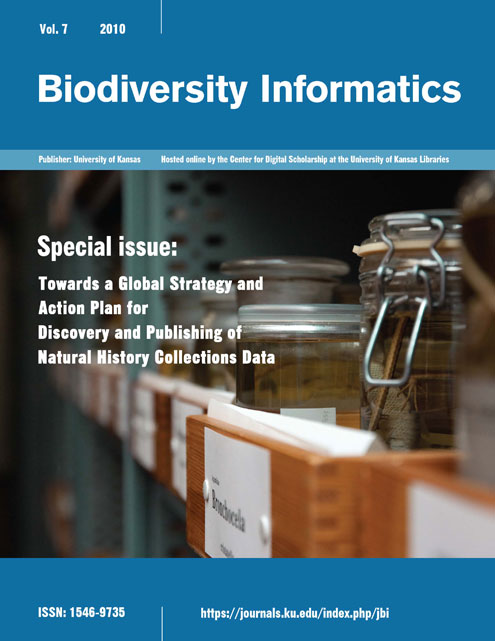Using geographical and taxonomic metadata to set priorities in specimen digitization
DOI:
https://doi.org/10.17161/bi.v7i2.3988Keywords:
Natural history collections, collections, specimens, specimen data, metadata, digitization, GBIF, biodiversity researchAbstract
Digitizing the information carried by specimens in natural history collections is a key endeavor providing falsifiable information about past and present biodiversity on a global scale, for application in a variety of research fields far beyond the current application in biosystematics. Existing digitization efforts are driven by individual institutional necessities and are not coordinated on a global scale. This led to an over-all information resource that is patchy in taxonomic and geographic coverage as well as in quality. Digitizing all specimens is not an achievable aim at present, so that priorities need to be set. Most biodiversity studies are both taxonomically and geographically restricted, but access to non-digitized collection information is almost exclusively by taxon name. Creating a “Geotaxonomic Index” providing metadata on the number of specimens from a specific geographic region belonging to a specific higher taxonomic category may provide a means to attract the attention of researchers and governments towards relevant non-digitized holdings of the collections and set priorities for their digitization according to the needs of information users outside the taxonomic community.Downloads
Download data is not yet available.
Downloads
Published
2010-10-09
Issue
Section
Articles (peer-reviewed)
License
Copyright for articles published in this journal is retained by the authors, with first publication rights granted to the journal. All articles are licensed under a Creative Commons Attribution Non-Commercial license.
Competing Interests: The authors have declared that no competing interests exist.
How to Cite
Berendsohn, Walter G., and Peggy Seltmann. 2010. “Using Geographical and Taxonomic Metadata to Set Priorities in Specimen Digitization”. Biodiversity Informatics 7 (2). https://doi.org/10.17161/bi.v7i2.3988.

